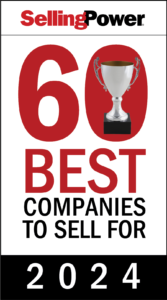How to Ace the Complex Sale
The complex sale is overrun with salespeople who rely on a combination of doorstopper proposals, a wing and a prayer, and extensive product knowledge to close deals. These are missteps the folks at Selling Energy have seen time and again in the energy solutions industry. This Inc. 5000 sales training firm based in San Francisco works with dozens of utilities, manufacturers, vendors, and service providers in the energy efficiency and renewable energy space. Their training focuses on how to stand out in a world where most energy solutions professionals generate overly lengthy technical proposals that fail to capture management attention – much less the capital to implement projects.
Mark Jewell, the lead instructor at Selling Energy, has more than 30 years of experience in energy-related decision making. He presents live workshops across the U.S. and internationally as well as online/on-demand courses that focus on reframing and expressing proposed solutions so they capture decision makers’ attention and motivate action. Here are three key selling insights taken from his Wall Street Journal bestseller, Selling Energy: Inspiring Ideas that Get More Projects Approved!
Insight #1: Understand that buyers don’t decide; they compare.
Mark likes to say in his workshops that most businesspeople don’t make decisions. They make comparisons. And the salesperson’s challenge is to frame each comparison properly.
What does this mean? Let’s say you’re proposing an expense-reducing capital project that would pay for itself in three years. The prospect tells you his company has never invested in an offering with a payback period that long. He’s thinking to himself that he either keeps the money in his pocket or he gives it to you and waits three years to get it all back. Comparing the two, which alternative makes him feel more comfortable?
Seems like the sale is over, right? Not necessarily. Try reframing the conversation around Savings-to-Investment Ratio.
Let’s assume that, over the life of your proposed project, the project would return $4.50 in present value for every dollar invested today. The prospect will likely see that outcome as far superior to what other investments are offering. A more interesting comparison can now drive the decision, and the payback period objection will likely fade away.
Insight #2: Eliminate all tech babble.
Most salespeople are incredibly excited to land a meeting with a C-level executive. However, they blow their big opportunity by spewing incomprehensible tech babble while describing the features and benefits of their offering. Meanwhile, the executive can barely keep her eyes open.
The problem here is that the majority of salespeople receive plenty of product knowledge training in their careers, but very little professional sales training. As Mark says, “Mediocre salespeople remain in their comfort zone, hiding behind product knowledge, because they haven’t taken the time to develop the segment-specific insights, business acumen, and confidence to focus on their prospect’s true goals or decision making process. Successful sales professionals focus on their prospects’ values rather than their offerings’ features. They gain a genuine competitive advantage by reframing their offerings’ benefits so they can be measured using the yardsticks their prospects are already using to measure their own success.”
Insight #3: Engage in “real talk,” not “small talk.”
If you truly want to stand out as a sales professional, find a way to start the conversation with a customer by praising his or her ideas or stated beliefs. Mark advises doing the following:
- Research the people you’ll be meeting using Google, LinkedIn, Facebook, and Twitter. Read their posts and see if they’ve been quoted in any articles, conference proceedings, or press releases.
- Pay attention to previous positions they’ve held as well as any committees or boards on which they serve. Seek to understand the people rather than the job titles.
- Look for details about the industry or your prospects that could provide the bridge to genuinely productive business discussions.
Here’s an example. Before meeting with a CEO to help identify why energy efficiency had not been a priority at his company, Mark first considered how to best connect the dots between enhanced efficiency and other outcomes the CEO would likely value. He then researched the executive thoroughly online. He learned that his prospect was not only the dominant player in a particular property type across a large region, but also a hard-hitting, egocentric mogul who cut a wide swath in the press.
The next day, Mark walked into the meeting, shook the CEO’s hand, and said, “Hello, Bill” (not his real name). “Pleasure to meet you. I really liked what you said last April about the resilience of your property type in today’s real estate economy.” The CEO was so pleased to hear this praise that he smiled, asked Mark where he had read the quote, and was immediately eager to have a longer conversation. And, since that conversation was grounded in a solid understanding of the economics of that CEO’s industry, Mark found it easy to segue the discussion to how energy efficiency would make the executive’s real estate portfolio even more competitive, profitable, and valuable – which was, of course, the original intent of the meeting.
Get our eNewsletter
Get the latest sales leadership insight, strategies, and best practices delivered weekly to your inbox.
Sign up NOW →